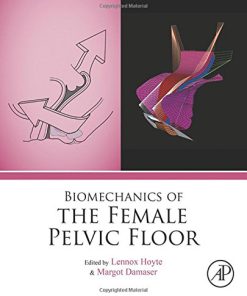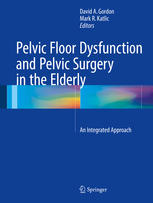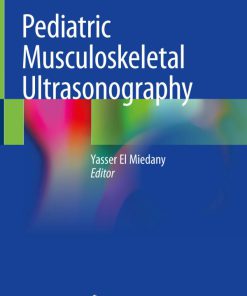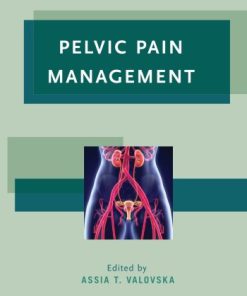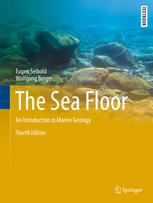Practical Pelvic Floor Ultrasonography A Multicompartmental Approach to 2D 3D 4D Ultrasonography of the Pelvic Floor 2nd Edition by Abbas Shobeiri ISBN 9783319529295 3319529293
$50.00 Original price was: $50.00.$25.00Current price is: $25.00.
Practical Pelvic Floor Ultrasonography A Multicompartmental Approach to 2D 3D 4D Ultrasonography of the Pelvic Floor 2nd Edition by Abbas Shobeiri – Ebook PDF Instant Download/Delivery: 9783319529295 ,3319529293
Full download Practical Pelvic Floor Ultrasonography A Multicompartmental Approach to 2D 3D 4D Ultrasonography of the Pelvic Floor 2nd Edition after payment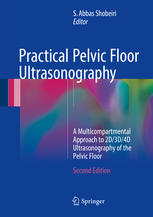
Product details:
ISBN 10: 3319529293
ISBN 13: 9783319529295
Author: Abbas Shobeiri
Practical Pelvic Floor Ultrasonography A Multicompartmental Approach to 2D 3D 4D Ultrasonography of the Pelvic Floor 2nd Edition Table of contents:
1: Pelvic Floor Anatomy
Introduction
Support of the Pelvic Organs: Conceptual Overview
Practical Anatomy and Prolapse
Overview
Apical Segment
Anterior Compartment
Perineal Membrane (Urogenital Diaphragm)
Posterior Compartment and Perineal Membrane
Lateral Compartment and the Levator Ani Muscles
Endopelvic Fascia and Levator Ani Interactions
The Levator Plate
Nerves
Summary
References
2: 2D/3D Endovaginal and Endoanal Instrumentation and Techniques
Introduction
2D Transperineal and 3D Endovaginal and Endoanal Ultrasound Imaging
The 2D Probes
The 3D Endocavitary High-Resolution Probes
BK 2052 Anorectal 3D Transducer (Endocavitary 360° Probe)
BK 8848 Endocavity Biplane Transducer
BK 8838 ART Transducer (Endocavitary 360° Probe)
BK 3D Viewer Software
Multicompartmental Ultrasonographic Techniques
Patient Positioning
2D Transperineal Functional Imaging
2D/3D Endovaginal Anterior Compartment Imaging
2D/3D Endovaginal Posterior Compartment Imaging
3D 360° Endovaginal Imaging
3D 360° Endoanal Imaging
Summary
References
3: Instrumentation and Techniques for Perineal and Introital Pelvic Floor Ultrasound
Introduction
Perineal Pelvic Floor Ultrasonography (pPFUS)
2D pPFUS
Pelvic Floor Muscle Contraction
Valsalva Maneuver
3D/4D pPFUS
GE 4D View Software
2D/3D/4D Introital Pelvic Floor Ultrasonography iPFUS
Basic Procedure and Equipment
Positioning
Probes
Equipment Preparation
iPFUS Orientation and Optimization
2D: Technique: Orientation
3D iPFUS: Technique
3D iPFUS: Pelvic Floor Hiatus—Orientation, Optimization, and Rotation
PFUS and Pelvic Floor Disorders
Pelvic Floor Biometry with PFUS
iPFUS and pPFUS: Pelvic Floor (Levator) Hiatus and Pelvic Floor Musculature
Levator Ani Avulsion
Anal Sphincter Complex and Anal Canal pPFUS and iPFUS
3D PFUS and MRI
iPFUS and pPFUS in the Evaluation and Treatment of Urinary Incontinence
iPFUS and pPFUS and Pelvic Organ Prolapse
Summary
References
4: Perineal Pelvic Floor Ultrasound: Applications and Literature Review
Introduction
Perineal Ultrasonography
2D Perineal Ultrasonography
3D/4D Perineal Ultrasonography Equipment
GE 4D View Software
2D/3D/4D Perineal Ultrasonography (pPFUS)
Basic Procedure and Equipment
pPFUS Role in Evaluation of Pelvic Floor Trauma During Childbirth
pPFUS Role in Evaluation of Urinary Incontinence
pPFUS Role in Evaluation of Pelvic Organ Prolapse
pPFUS Role in Evaluation of Fecal Incontinence
pPFUS Role in Evaluation of Vaginal Implants Such As Mesh and Bulking Agents
pPFUS Role in Planning Surgery and Summary/Future Directions
References
5: 3D Endovaginal Ultrasound Imaging of the Levator Ani Muscles
Introduction
Imaging Modalities for Endovaginal Imaging
3-D EVUS Technique for Levator Ani Imaging
Clinical Applications
Levator Ani Injury
LAD: Levator Ani Deficiency Score
Scoring System
Changes of Levator Ani with Aging
Levator Plate Descent Angle and Minimal Levator Hiatus
Conclusions and Future Research
References
6: 3D Endovaginal Ultrasound Imaging of Pelvic Floor Trauma
Introduction
Prevalence of Pelvic Floor Trauma Following Vaginal Delivery
3D Endovaginal Ultrasound Technique for Levator Ani Imaging in a Postpartum Patient
Reliability and Reproducibility Studies in Post-Partum Patients
Levator Ani Injury During Childbirth
Risk Factors
Repair
Levator Ani Deficiency Score as a Measure of Levator Ani Atrophy
Scoring System
Puboanalis/Puboperinealis Muscles
Puborectalis
Iliococcygeus/Pubococcygeus (Pubovisceralis)
Clinical Relevance of the Scoring System
Conclusions and Future Research
References
7: Endovaginal Urethra and Bladder Imaging
Introduction
Equipment, Technology, and Methodology
Patient Position
Patients Preparation
Methodology
BK 2050/2052/20R3 Anorectal 3D Transducer
BK 8848 Endocavity Biplane Transducer
Sagittal Section
Axial Section
BK 8838 3D ART Transducer
Vascular Render Mode and Maximum Intensity Projection
Urinary Bladder
Anatomy of Female Urethra and Bladder
Ultrasound Morphology
Urethral Vascularity
Clinical Applications of Urethral Ultrasound
Conclusions and Future Research
3D Endovaginal Ultrasound
3D EVUS in Interventional Treatment
Future Applications and Directions of Development
References
8: 2D/3D Transperineal and 3D Endovaginal Imaging of the Posterior Compartment
Introduction
Sonographic Anatomy
Transperineal Imaging
Endovaginal Imaging
Axial Plane
Sagittal Plane
Coronal Plane
Techniques and Literature Review
Transperineal Ultrasound
Clinical Applications
Rectocele
Enterocele
Rectal Intussusception
Endovaginal Ultrasound
Clinical Applications
Rectocele
Enterocele
Intussusception
Pelvic Floor Dyssynergy
Other Findings in the Posterior Pelvic Floor Compartment
Conclusions
References
9: Endovaginal Imaging: Vaginal Mesh and Implants
Introduction
History and Type of Vaginal Mesh
Ultrasonographic Findings of Mesh
Perineal/Introital Approach
Endovaginal Approach
Endoanal Approach
Mesh Complications and Ultrasonographic Findings
Mesh Contraction (Shrinkage)
Mesh Extrusion
Urinary Tract or Lower Gastrointestinal Tract Compromise or Perforation
Musculoskeletal: Pain, Lump, Decreased Elasticity, and Sinus Formation
Conclusion
References
10: Endovaginal Imaging: Slings
Introduction
Multicompartment Endovaginal Imaging in the Visualization of Slings
3D Imaging of Retropubic (Pubovaginal and Midurethral) and Transobturator Slings
Technical Details of Performing 3D EVUS to Visualize Slings
180° Scan of the Anterior Compartment
360° Scan
Manipulation of the 3D Data Volume to Trace the Intrapelvic Course of Slings, Retropubic, and
2D Dynamic Functional Assessment of the Slings
2D Dynamic Functional Assessment of Slings and Its Correlation with Outcome
Deformability of the Sling
Location of the Sling on Maximal Valsalva
Concordance of Urethral Movement with the Sling During Maximal Valsalva
2D Dynamic Assessment of Deformability of Different Sling Types
Diagnosis and Planning of Future Treatment in the Case of Failed Sling Surgery
Unknown Sling Type
Determining the Location of a Failed Sling
Planning of Treatment in Patients with Complicated Treatment History
Planning of Treatment in Patients with Voiding Dysfunction Following Sling Surgery
Slings and the Overactive Bladder
Comparison of Transperineal and Endovaginal Ultrasound in the Imaging of Slings
Anatomic Path of Transobturator Slings and Its Association with Pelvic Pain
Conclusions and Future Research
References
11: Imaging of Urethral Bulking Agents
Introduction
Potential of Multicompartmental Ultrasound Imaging in the Visualization of Periurethral Distrib
Technical Details of Performing 3D EVUS to Visualize Urethral Bulking Agents
Ultrasonographic Parameters of Bulking Agent Injection
Ideal Site of Injection
Periurethral Distribution of MPQ
Location of the Injection Plus Periurethral Distribution
Conclusion
References
12: Endovaginal Imaging: Pelvic Floor Cysts and Masses
Introduction
3D EVUS Technique
Bartholin Gland Cyst/Abscess
Skene Gland Cyst/Abscess
Urethral Diverticulum
Gartner Duct Cyst
Leiomyoma of Vagina
Malignant Vaginal Masses
Rectovaginal Septum Endometrioma
Vaginal Seroma and Hematoma
Conclusions and Key Points
References
13: Endoanal Ultrasonographic Imaging of the Anorectal Region
Introduction
Ultrasonographic Techniques
Endosonographic Anatomy of the Normal Anal Canal
Endosonographic Anatomy of the Rectum
Clinical Application of 3D Endoanal/Endorectal Ultrasound
Fecal Incontinence
Obstructed Defecation and Posterior Vaginal Wall Prolapse
Perianal Abscesses and Fistulas
References
14: Endoanal Imaging of Anorectal Cysts and Masses
Endometriosis
Deep Endometriosis
Perianal Endometriosis
Pre-sacral Neoplasia
Rare Tumors
Rectal Leiomyoma
Gastrointestinal Stromal Tumors (GIST)
Cystic Vaginal Lesion
Benign Urethral Lesion
Lymphocele
References
15: Ultrasound-Augmented Clinical Examination and Intraoperative Pelvic Floor Ultrasonography
Introduction
Clinical Pain Mapping in Mesh Patients
Intraoperative Ultrasound-Guided Botox of the Pelvic Floor
Intraoperative Ultrasound-Guided Sling Release
Intraoperative Ultrasound-Guided Repair of Levator Ani Tears
Intraoperative Assessment of Uterine and Vaginal Müllerian Anomalies
Intraoperative Assessment of Uterine Fibroids
Conclusions and Future Research
References
16: Ultrasound in Pelvic Floor Physiotherapy
Introduction
The Physical Therapist’s Role
The Role of Ultrasound in Physiotherapy
Older Women
Abdominal Ultrasound: 2D and 3D Abdominal Ultrasound of the Abdominal Muscles
Pelvic Floor Ultrasound Techniques
Ultrasound Tips and Techniques
Room for Scanning
Preparation and Hygiene
Orientation of the Ultrasound Picture on the Screen
Scan Technique
Special Tools of the Ultrasound Machines and Their Use
Physical Examination and Evaluation by a Pelvic Floor Therapist
Positioning During Examination: Influences on Therapy
Maneuvers During Evaluation
Palpation and Ultrasound
The Uses of Ultrasound to Assess Different Areas of Inquiry
The Use of Ultrasound to Quantify Levator Activity and to Teach a Pelvic Floor Muscle Contract
Assessment of Pelvic Floor Muscle Contraction in Urinary Incontinent Women
Assessment of Pelvic Floor Function in Fecally Incontinent Women and in Obstructed Defecation o
Assessment of Pelvic Floor Function in Pelvic Organ Prolapse
Assessment of Pelvic Floor Function in Patients with Pelvic Pain Syndrome
Integration of Ultrasound in Formulating a Treatment Plan
Summary and Future Directions for the Use of Ultrasound in Physiotherapy
References
17: Emerging Imaging Technologies and Techniques
Ultrasound Elasticity Imaging
Acoustic Radiation Force Impulse and Shear Wave Elasticity Imaging (ARFI and SWEI) of the Cervi
Photoacoustic Imaging of Ovarian Tissue and the Cervical Canal
Tactile Imaging of the Female Pelvic Floor
Functional Tactile Imaging
Summary
References
18: Patient-Specific Studies of Pelvic Floor Biomechanics Using Imaging
Introduction
Patient-Specific 3D Reconstruction of Female Pelvic Floor
Constitutive Material Properties of the Pelvic Floor
Future Outlook: Quantitative Assessment Using Ultrasound
Conclusion
References
19: Pelvic Floor Ultrasonography: Post-Test Questions
Post-Test Key
Index
People also search for Practical Pelvic Floor Ultrasonography A Multicompartmental Approach to 2D 3D 4D Ultrasonography of the Pelvic Floor 2nd Edition:
what is a pelvic floor ultrasound
pelvic floor ultrasound technique
why doctor recommend pelvic ultrasound
pelvic floor ultrasound imaging
Tags:
Abbas Shobeiri,Practical Pelvic,Ultrasonography,Multicompartmental,Approach,Pelvic Floor
You may also like…
Medicine
The Use of Robotic Technology in Female Pelvic Floor Reconstruction 1st Edition Jennifer T. Anger
Medicine
Science (General)
Uncategorized
Medicine
Pediatric Musculoskeletal Ultrasonography 1st edition by Yasser El Miedany 3030178246 9783030178246
Earth Sciences - Oceanography
The Sea Floor An Introduction to Marine Geology 4th Edition Eugen Seibold






